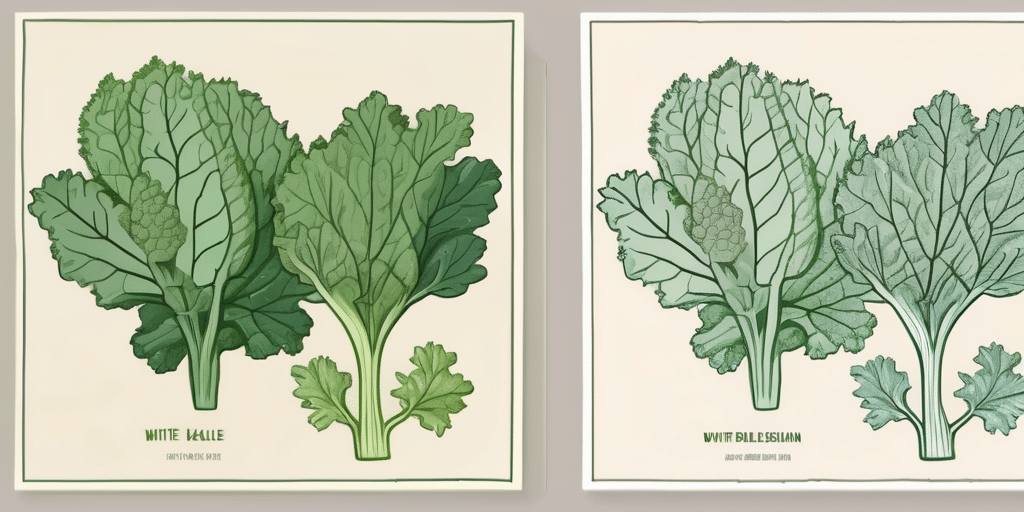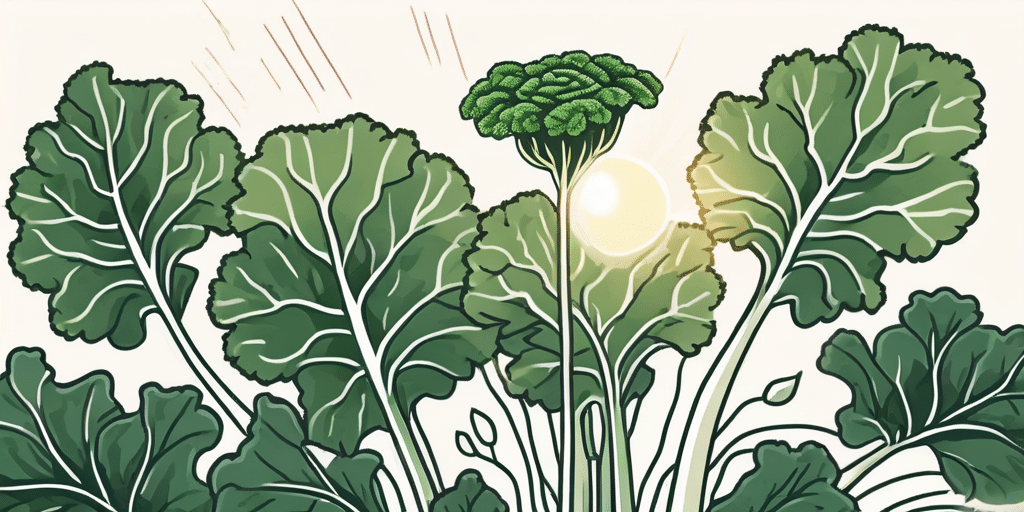Lacinato kale, also known as dinosaur kale or Tuscan kale, is a popular leafy green vegetable that thrives in the diverse climate of Oregon. With its dark green, bumpy leaves and rich flavor, Lacinato kale is a versatile addition to any garden or kitchen. In this article, we will explore when to plant Lacinato kale in Oregon, how to grow it successfully, and answer some frequently asked questions about this delicious vegetable.
Climate & Hardiness Zones in Oregon
Before diving into planting Lacinato kale, it’s essential to understand the climate and hardiness zones in Oregon. The state experiences a wide range of climates, from temperate coastal regions to the colder, more mountainous areas. The hardiness zones in Oregon range from Zone 4 to Zone 9, with Zone 4 being the coldest and Zone 9 the warmest.
Oregon’s diverse climate is influenced by its varied topography, with the Cascade Range dividing the state into distinct climate regions. The western part of Oregon, including cities like Portland and Eugene, enjoys a mild maritime climate with wet winters and dry summers. This region is classified as Zones 8 and 9, making it suitable for a wide range of plant species that thrive in these temperate conditions.
On the other hand, the eastern part of Oregon, which includes high desert areas like Bend and Ontario, experiences a more continental climate with greater temperature variations between day and night. This region falls into Zones 4 to 7, posing challenges for certain plants that may not tolerate the colder winters or hotter summers. It’s crucial for gardeners in these areas to select plant varieties that are well-suited to the specific hardiness zone to ensure successful growth and cultivation.
When to Plant Lacinato Kale in Oregon
The ideal time for planting Lacinato kale in Oregon depends on the specific hardiness zone you are in. In general, it is best to start planting in early spring or late summer.
For Zone 4 to Zone 6, where the winters are colder, it is recommended to plant Lacinato kale in the early spring when the ground has thawed and the temperatures are consistently above freezing. This will give the kale enough time to establish roots before the heat of summer arrives.
In Zone 7 to Zone 9, where the winters are milder, you have the option to plant Lacinato kale in both early spring and late summer. Planting in early spring will allow for a longer growing season, while planting in late summer will give you a fall harvest.
When selecting a planting location, choose an area that receives at least 6 hours of sunlight per day and has well-draining soil. Lacinato kale can tolerate partial shade but performs best in full sun.
It’s important to note that Lacinato kale, also known as dinosaur kale or Tuscan kale, is a nutrient-dense leafy green that is rich in vitamins A, C, and K. This variety of kale has dark blue-green leaves that are bumpy and resemble dinosaur skin, hence its nickname.
When planting Lacinato kale, consider incorporating organic matter such as compost or aged manure into the soil to provide essential nutrients for the plant’s growth. Additionally, mulching around the base of the kale plants can help retain soil moisture and suppress weed growth.
Watering is crucial for the success of Lacinato kale, especially during hot summer months. Aim to keep the soil consistently moist but not waterlogged. Using a soaker hose or drip irrigation system can help deliver water directly to the roots and reduce the risk of foliar diseases.
How to Grow Lacinato Kale in Oregon
Now that you know when to plant Lacinato kale in Oregon, let’s explore how to grow it successfully.
Soil Preparation
Before planting, prepare the soil by incorporating organic matter such as compost or well-rotted manure. This will improve the soil’s fertility and drainage, ensuring that your kale plants receive the nutrients they need to thrive. Aim for a pH level between 6.0 and 7.5, as this is the optimal range for Lacinato kale.
Planting
- Start by sowing kale seeds indoors 6-8 weeks before the last expected frost date in your area. Follow the instructions on the seed packet for the appropriate planting depth.
- To promote successful germination, keep the soil evenly moist and provide bottom heat with a seedling heat mat or by placing the seed trays on top of a warm surface.
- Once the seedlings have reached a height of 2 inches and have developed a set of true leaves, it’s time to transplant them outdoors. Harden off the seedlings by gradually exposing them to outdoor conditions over a period of 7-10 days.
- When the soil temperature has reached at least 40°F (4°C), you can transplant the seedlings into the prepared garden bed. Space them 12-18 inches apart, allowing room for the plants to grow.
Care & Maintenance
Proper care and maintenance will help your Lacinato kale plants thrive and produce abundant harvests.
Watering
Keep the soil evenly moist throughout the growing season, providing about 1-1.5 inches of water per week. Mulching around the plants can help retain moisture and suppress weed growth.
Fertilizing
Apply a balanced organic fertilizer, following the manufacturer’s instructions, before planting. Side-dress the plants with compost or a slow-release fertilizer every 4-6 weeks during the growing season to provide additional nutrients.
Weed Control
Regularly remove any weeds that appear near your kale plants. Weeds compete for nutrients and water, so keeping the area around your kale beds weed-free will ensure optimal growth.
Pest & Disease Management
Lacinato kale is generally hardy and less susceptible to pests and diseases compared to other crops. However, it’s essential to monitor for common pests like aphids, cabbage loopers, and flea beetles. If necessary, use organic pest control methods such as handpicking, insecticidal soap, or neem oil.
When to Harvest or Pick Lacinato Kale in Oregon
As your Lacinato kale plants grow, you’ll eagerly await the moment when you can harvest the leaves and enjoy them in your favorite dishes. The timing of harvest depends on your preferences.
If you prefer tender baby kale leaves, you can start harvesting them when the plants are around 6-8 inches tall. Simply snip off the outer leaves, leaving the inner leaves to continue growing.
For mature leaves, wait until the plants reach 12-16 inches in height. Harvest by cutting the entire plant at ground level or by removing leaves individually as needed.
To enjoy a winter harvest, consider using row covers or cold frames to protect the kale plants from freezing temperatures.
Frequently Asked Questions
- Q: Can Lacinato kale withstand cold temperatures?
A: Lacinato kale is considered quite hardy and can tolerate temperatures down to 20°F (-6°C). With proper protection, it can withstand even colder temperatures. - Q: Can I grow Lacinato kale in containers?
A: Absolutely! Lacinato kale can be successfully grown in containers, as long as the containers are at least 12 inches deep and have drainage holes. Choose a large container to allow for the kale’s extensive root system. - Q: How long does it take for Lacinato kale to grow?
A: Lacinato kale typically takes 55-75 days to reach maturity from the date of transplanting. However, you can start harvesting baby leaves as early as 25-30 days after transplanting, depending on your preference. - Q: Can I save seeds from Lacinato kale plants?
A: Yes, you can save seeds from Lacinato kale plants if you allow some plants to bolt and go to seed. The seeds can be collected once they have fully dried on the plant. Store the seeds in a cool, dry place until the next planting season.
Now armed with knowledge on when to plant Lacinato kale in Oregon and how to grow it successfully, you can confidently embark on your kale-growing adventure. Whether you’re an experienced gardener or a beginner, Lacinato kale is a rewarding vegetable to cultivate. Its hardiness and versatility make it an excellent addition to any garden, and its delicious taste ensures a place on your plate. Happy growing and happy harvesting!
Join Our Gardening Community
Ready to take your gardening skills to the next level? Subscribe for free to How to Grow Everything and learn how to build the garden of your dreams! Receive personalized gardening advice tailored to your Oregon grow zone, experience level, and interests. Enjoy the best gardening tips, special offers, and insights delivered directly to your inbox—100% free, from our family to yours. With thousands of free growing and gardening articles at your fingertips, you’ll have everything you need to grow Lacinato kale and more. No spam, just pure gardening gold. Join our community today!






